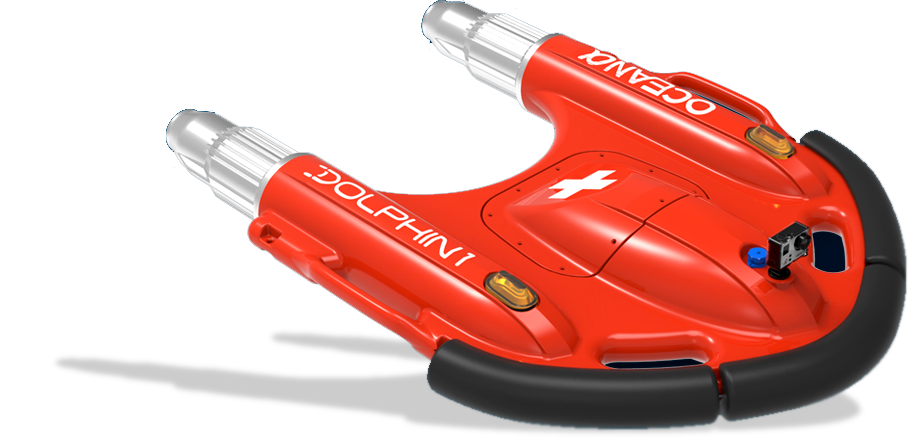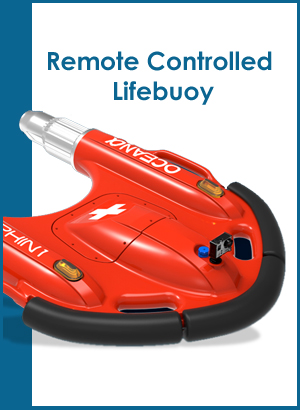


MAINTAIN VANTAGE POINT
The Smart LifeBuoy bright color and flash lights make it eminently noticeable in water and reduce the
risk of the rescuer losing sight of the victim.
LOW RESCUE COSTS
Reduces rescue costs because it is battery powered and remotely navigable requiring less in the way of
fuel costs.
ADVERSE WEATHER OPERATION
The Smart LifeBuoy rescue robot is a weather neutral platform that operates equally well in adverse weather
and swift water.
OPERATIONAL SAFETY
Remote control rescue reduces risks such as panicking victims and/or adverse water conditions leading to the rescuer becoming an additional victim.
DEPLOY FASTER
Smart LifeBuoy is quicker to deploy within minutes than other rescue vehicles like small vessels, Zodiacs, jet skis, etc.
COMPLEMENTARY ASSET
Every water rescue is different and those charged with rescue should have as many effective tools at their disposal to tailor the quickest, safest response to each scenario to give every potential victim the best chance to be rescued.
Investing in a remote control rescue lifebuoy offers several compelling advantages, particularly for organizations involved in maritime operations, safety, and rescue services. Here are some key reasons to consider such an investment:
1. Enhanced Speed and Efficiency: Remote control lifebuoys can be deployed rapidly and directed precisely, allowing for a faster response to emergencies. This is crucial in water rescue scenarios where every second counts.
2. Increased Safety for Rescuers: These devices reduce the risk to human rescuers by allowing them to assist individuals in distress without entering hazardous conditions themselves. This is particularly important in rough or dangerous waters.
3. Expanded Reach: The ability to control the lifebuoy remotely allows rescuers to extend their reach far beyond what is possible by swimming or using boats. They can navigate through obstacles and reach victims trapped in areas that are otherwise inaccessible.
4. Improved Success Rates in Rescues: With precise maneuverability and speed, remote control lifebuoys can improve the overall success rate of rescue missions. They can quickly provide flotation assistance to individuals, helping prevent drowning and giving rescuers more time to execute further rescue operations.
5. Versatility: These devices can be used in a variety of water-related incidents, including at beaches, on boats, and near dams or rivers. They are also useful in different weather conditions and environments.
6. Cost-Effectiveness: While the initial investment might be significant, the reduction in manpower needed for each rescue and the decrease in risk to human life can result in long-term savings and better allocation of resources.
7. Integration with Other Technologies: Remote control lifebuoys can be equipped with cameras and other sensors, allowing operators to gain a better understanding of the emergency situation before deploying further resources. This integration can enhance overall rescue operations and strategy.
8. Training and Readiness: These devices require relatively minimal training compared to more complex rescue operations, enabling a broader range of personnel to operate them effectively. This increases the readiness and capability of rescue teams.
9. Public Confidence and Image: Employing advanced rescue technology can enhance the public image of a safety organization, demonstrating a commitment to utilizing state-of-the-art tools to safeguard lives.
10. Regulatory Compliance: As safety standards evolve, utilizing such advanced rescue equipment can help organizations comply with national and international safety regulations and standards, potentially avoiding legal issues and penalties.
Investing in remote control rescue lifebuoys can significantly bolster the effectiveness and safety of water-based rescue operations.




